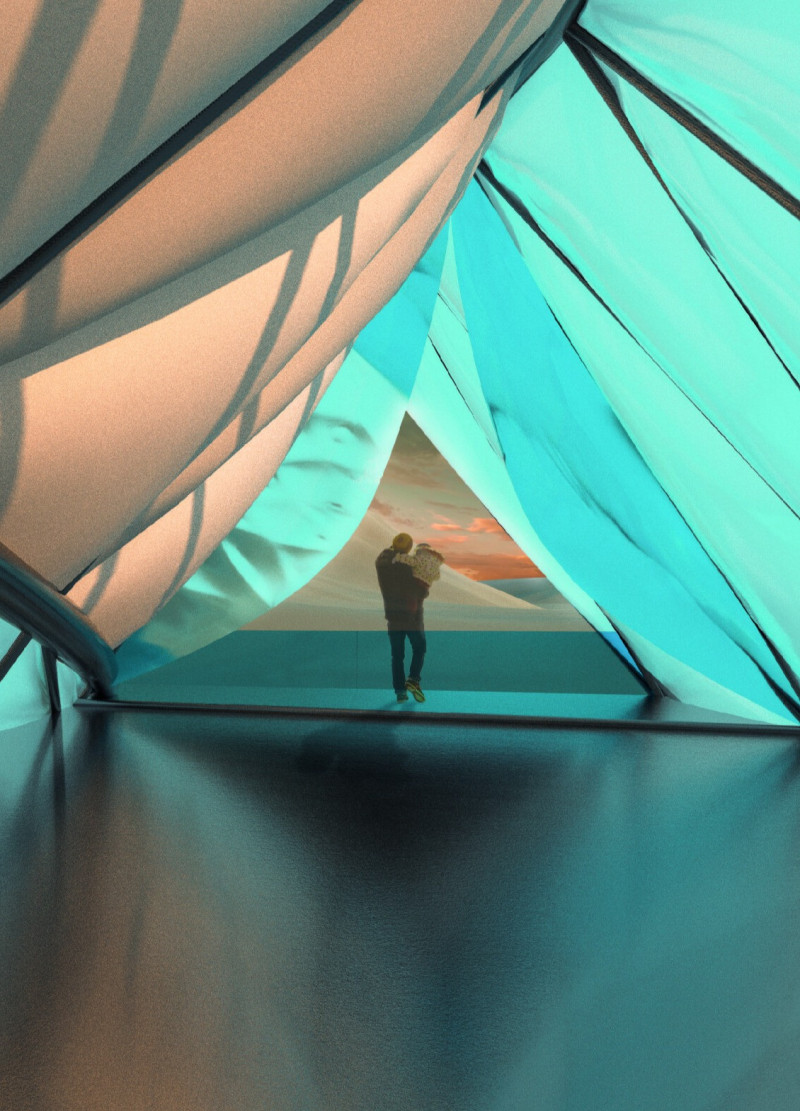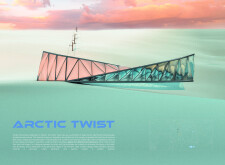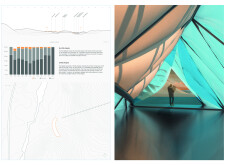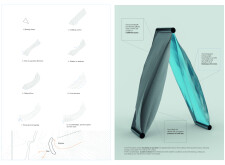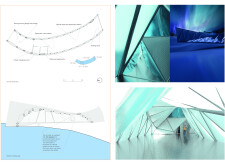5 key facts about this project
### Overview
Arctic Twist is situated in the Myåhn wilderness, where it addresses both the aesthetic and functional challenges posed by the Arctic environment. The design integrates with the surrounding landscape while responding to climatic conditions, providing a setting for reflection and engagement with nature. The structure aims to create an inviting space for visitors to experience the natural beauty of the region alongside modern facilities.
### Material and Environmental Considerations
The architectural design utilizes a selection of materials that enhance both performance and resilience. Steel forms the backbone of the structure, offering durability and enabling expansive interior spaces. The façade employs ETFE (Ethylene Tetrafluoroethylene) foil, a lightweight material featuring a triple-layer configuration that creates thermal insulation and maximizes natural light. Glass elements are incorporated strategically to increase visibility and establish a connection with the outdoor environment, effectively illuminating the interior.
The building's orientation is informed by thorough sun path and climate analyses that guide decisions on window placement and structural openings. This ensures that the structure captures sunlight to optimize heating and illumination, particularly in the darker winter months. The careful integration of these considerations allows Arctic Twist to maintain a minimal environmental footprint while catering to visitor comfort and experience.
### Spatial Organization
The interior layout of Arctic Twist is designed for optimal visitor engagement, featuring distinct zones that promote interaction with the landscape. A panoramic viewing deck provides expansive vistas of the terrain, while designated areas for rest and refreshments facilitate comfort during outdoor activities. Additionally, the design includes necessary facilities such as changing rooms and washrooms, enhancing visitor convenience. The spatial configuration not only supports functional needs but also reinforces the relationship between the structure and its natural surroundings, promoting a cohesive visitor experience.


